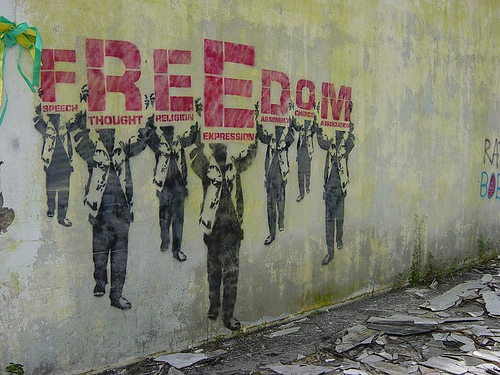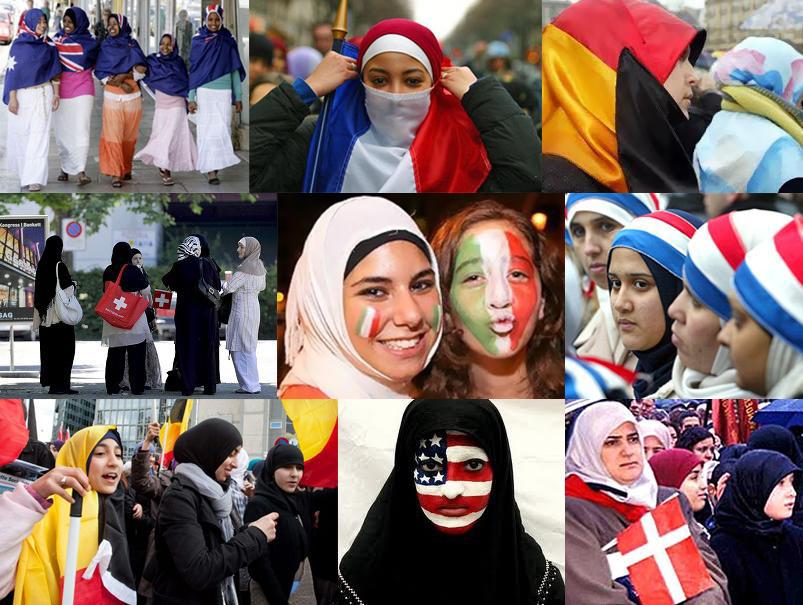Yasmine Fakhry
-
Naakow Grant-Hayford and
giselle wansa are now friends 11 years, 8 months ago
-
Naakow Grant-Hayford and
YAKUBU AJIJI are now friends 11 years, 8 months ago
-
Naakow Grant-Hayford and
 Laura Bishop are now friends 11 years, 8 months ago
Laura Bishop are now friends 11 years, 8 months ago -
Naakow Grant-Hayford wrote a new post 11 years, 8 months ago
Die Kunst der Prognostik – Wird die Welt friedlicher?
Workshop mit Prof. Johan Galtung
Im Rahmen eines dreistündigen Workshops werden Ihnen Methoden zur Erstellung belastbarer gesellschaftlicher Prognosen vermittelt. Sie sind herzlich eingeladen
Sa 30.03.2013 16:00 – 19:00 Uhr
Anmeldung unter info@galtung-institut.de
Teilnahmegebühr regulär: € 50 / CHF 60
Studierende: € 25 / CHF 30
1980 wagte Prof. Galtung die Vorhersage, dass vor 1990 die Berliner Mauer zusammenbrechen würde und danach das sowjetische Imperium. Nach dem Zusammenbruch des Ostblocks prognostizierte Galtung, dass entweder die Grünen oder der Islam das neue Feindbild des Westens würden. In seinem neuen Buch hält er an seiner Prognose zum Fall des U.S.-Imperiums bis 2020 fest.
Wie geht das?
Im Verlauf des Workshops wird untersucht, ob die Welt, in der wir leben, friedlicher wird. Mit Frieden ist hierbei nicht nur die Abnahme von kriegerischen Auseinandersetzungen zwischen Staaten oder Machthabern gemeint, sondern die Resilienz einer Friedenskultur, die sich sowohl auf der zivilgesellschaftlichen als auch auf der internationalen Ebene entfaltet. Um dieser Frage gründlich nachgehen zu können, bedarf es eines systematischen Verständnisses gesellschaftlicher Prozesse, um Prognosen für deren Entwicklung treffen zu können.
Die am wenigsten zielführende Methode besteht laut Prof. Galtung darin, einen gegenwärtigen Trend in die Zukunft zu projizieren. Gesellschaftliche Prozesse verlaufen selten linear und bewegen sich eher in Wellen, Spiralen und allen erdenklichen Formen, erweisen sich aber kaum je als kontinuierlich zu- oder abnehmend. Ausgehend von dieser grundlegenden Beobachtung hat Prof. Galtung eine Methode für die Analyse gesellschaftlicher Phänomene entwickelt, die dialektisch – synoptisch – panoramisch vorgeht. Letztlich müssen möglichst viele Variablen eines gegebenen Realitätsausschnitts identifiziert und ihre Beziehungen zu einander ergründet werden. Im Rahmen des Workshops wird Prof. Galtung unter diesem Gesichtspunkt eine Auswahl seiner Befunde vorstellen, um den TeilnehmerInnen anhand konkreter Beispiele die Vorteile und Herausforderungen dieser Methode aufzuzeigen. -
Naakow Grant-Hayford and
Joy Ting are now friends 11 years, 8 months ago
-
Naakow Grant-Hayford and
Blake McDermott are now friends 11 years, 8 months ago
-
Naakow Grant-Hayford and
 Raman are now friends 11 years, 8 months ago
Raman are now friends 11 years, 8 months ago -
Naakow Grant-Hayford and
Alessandro Battiston are now friends 11 years, 9 months ago
-
Naakow Grant-Hayford and
Janice Pavlock are now friends 11 years, 11 months ago
-
Naakow Grant-Hayford wrote a new post 12 years ago
Johan Galtung: A CHANGE IN WASHINGTON? 06-12-2012
Washington, Election Night: OK, one of them won even if the real winners as usual were the non-voters, for whatever reason; men more than women. At about 23:15 Obama passed the magic 50%, not of the popular votes but for the electoral college, with 302-206 well above 270 and it turned into a landslide. Net result: status quo, no change. The media did their best to make the presidential election look important, being the pinnacle, the altar on which democracy is built. Some democracy. (Click here to read on) -
Naakow Grant-Hayford and
Claire are now friends 12 years, 1 month ago
-
Naakow Grant-Hayford replied to the forum topic Looking at Africa From Within Africa in the group
 African Futures 12 years, 1 month ago
African Futures 12 years, 1 month agoDear Aura,
thank you very much for your inquiry. I will answer in brief delay. But I must say that these two maps for me simply represent two separate attempts to depict the spatial reality of the african […]
-
Naakow Grant-Hayford wrote a new post 12 years, 1 month ago
Interview-Excerpt: “If you want peace, abolish hunger”
Federica Riccadonna: You say different communities have varying abilities to overcome and transcend conflict which you call the ‘local potential of peace’. How do you assess the Nepali people’s potential for peace?
Johan Galtung: Nepalis have a capacity for negative peace. The 10-year-long conflict was a testament to their potential for excessive violence, while during the 18 days of Jana Andolan II in 2006, they toppled a 240-year-old monarchy without resorting to violence.
Nepalis are specially good at ‘negative’ forms of non-violence like civil disobedience, demonstrations, and non-cooperation, but they struggle when it comes to positive non-violence, like nation building and constructiveactions towards peace.
Click here to read on -
Naakow Grant-Hayford started the forum topic Freedom of Expression = Freedom to Insult? in the group
 Understanding the Arab Revolts 12 years, 1 month ago
Understanding the Arab Revolts 12 years, 1 month ago -
Naakow Grant-Hayford wrote a new post 12 years, 1 month ago
After the Cartoons and the recent movie, the question is becoming more and more important:
How are we to live together respectfully and guided by empathy, if this is how we treat each other.
There are two key human rights values in this confrontation:freedom of expression–basic, but not the only value in the world;
freedom from insult and respect for the sacred–basic, but not alone.
Conflicts between two values generally have five outcomes:
1: Find out more here
2: What is your opinion on the matter?
-
Naakow Grant-Hayford started the forum topic The Muslim Diaspora in Europe and the USA in the group
 International Relations, Politics, Conflict, War & Peace, R2P, Human Rights 12 years, 1 month ago
International Relations, Politics, Conflict, War & Peace, R2P, Human Rights 12 years, 1 month ago -
Naakow Grant-Hayford wrote a new post 12 years, 1 month ago
We live in a multi-polar world;
not a bipolar world with two superpowers, nor a unipolar world with one remaining superpower. How many poles, and which, can be disputed.
But the following six may serve to map the present world: USA, EU, Russia, China, India and the OIC, the Organization for Islamic Cooperation, less crystallized than the others. We are talking about 0.31, 0.50, 0.14, 1.34, 1.21 and 1.63 billion human beings respectively, altogether 5.13 billion or 73% of the world population. Left out of this “hexagon” approach are Latin America, most of Africa, some of Asia, Japan and the Pacific.
By far the tallest diaspora in the world is Muslim: about 300 million, of them 177 in India [1], 19 in EU, 23 in China, 16 in Russia, 2.6 in USA.
This essay is about the Muslim social situation in two of the six poles: Europe and the USA. What do we mean by “social situation”? Attitude and behavior, Muslim and the host society. Attitudes vary from hatred-disdain via indifference to admiration and love; and behavior from violence via its absence ─ negative peace ─ to the positive peace of cooperation and harmony. The words “prejudice” and “discrimination” are often used for negative attitude and behavior, but they can also be positive. The basic point is the particle “pre”, a priori; a judgment made in advance, independent of direct experience. And the discrimination is built into the structure, working automatically.
1: Please click here to read on
2: To comment on the piece, please Click here.
-
Naakow Grant-Hayford and
Yasmine Fakhry are now friends 12 years, 1 month ago
-
Naakow Grant-Hayford started the forum topic Sharing Humour in the group
 General Discussion 12 years, 1 month ago
General Discussion 12 years, 1 month agoI just found this:

on my old pen drive.
A friend sent it to me on Thanks Giving some years ago.
I remember it got a good laugh out of me. Perhaps it’ll brighten up your day a […]
-
Naakow Grant-Hayford and
 said ezz eldin nasr are now friends 12 years, 1 month ago
said ezz eldin nasr are now friends 12 years, 1 month ago - Load More



![[X]](/img/dialog-close.png)